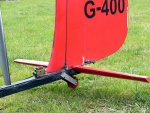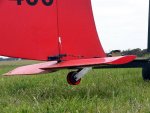Aussie_Paul
A reforming stirrer!!!!!
- Joined
- Oct 30, 2003
- Messages
- 4,441
- Location
- Ballarat Australia
- Aircraft
- None at the moment.
- Total Flight Time
- Since 1982 Gyro 5000+ mostly instructing, and approx. 200 fixed wing in the late 1960s.
....One of the problems that we continue to have without a tall tail is the prop torque, particularly in rough air. With CLT and an effective h/stab we still have the problem with torque roll when the rotor is unloaded in rough air.
A tall tail is not effective enough with a cabin, particularly if the engine fails and you have to land in a cross wind. Rare, yes, but possible.
Today I conducted some tests by having each side of the stab set at a different AoA, in favour of helping the torque roll. I was surprised how well this worked.
In am looking forward to conducting further tests in 3 weeks when I come home from Western Oz, where I get to fly a Magni, and a modified Raf.
Geez!!! it's a tough life but someone has to do it!!!!!!!!
Aussie Paul.
A tall tail is not effective enough with a cabin, particularly if the engine fails and you have to land in a cross wind. Rare, yes, but possible.
Today I conducted some tests by having each side of the stab set at a different AoA, in favour of helping the torque roll. I was surprised how well this worked.
In am looking forward to conducting further tests in 3 weeks when I come home from Western Oz, where I get to fly a Magni, and a modified Raf.
Geez!!! it's a tough life but someone has to do it!!!!!!!!
Aussie Paul.



